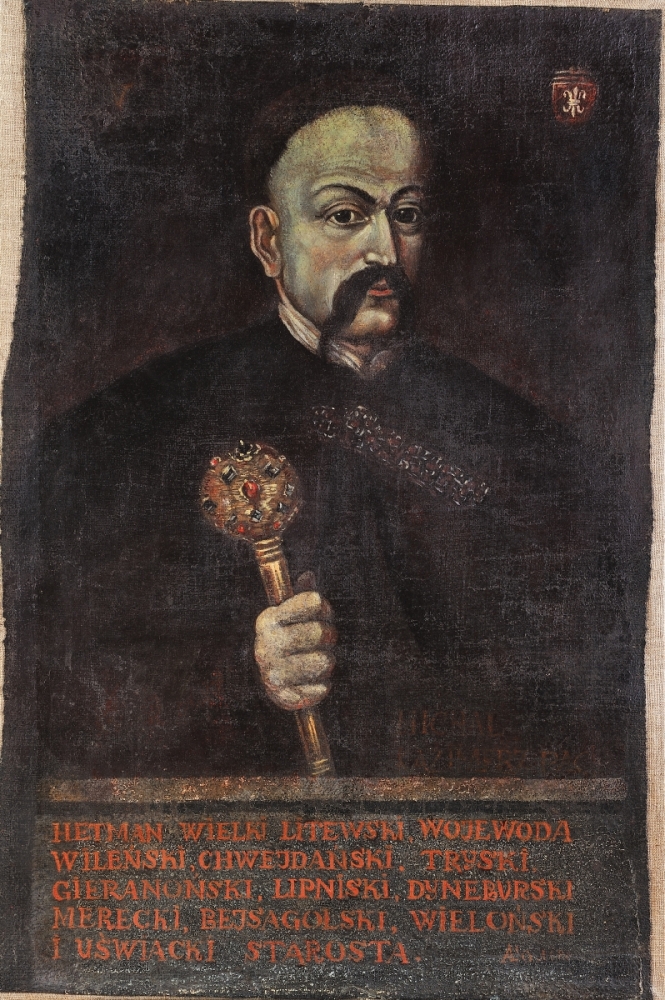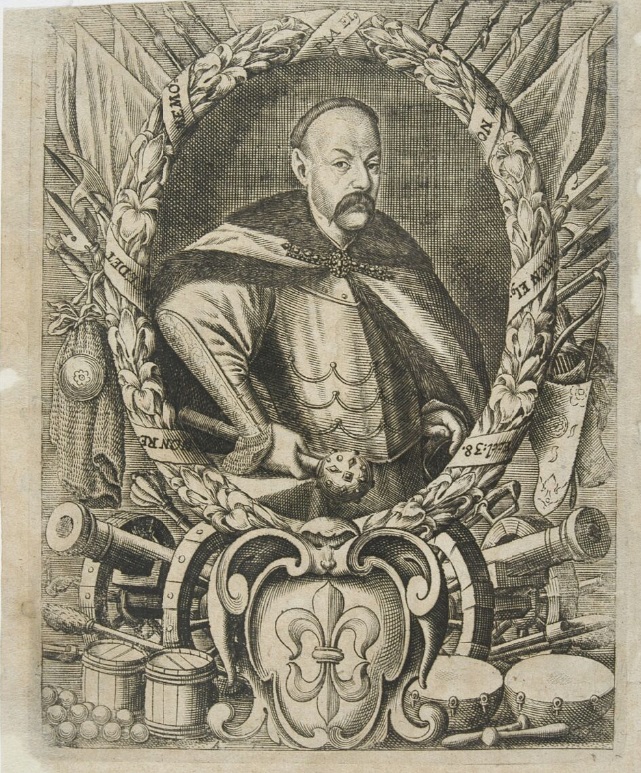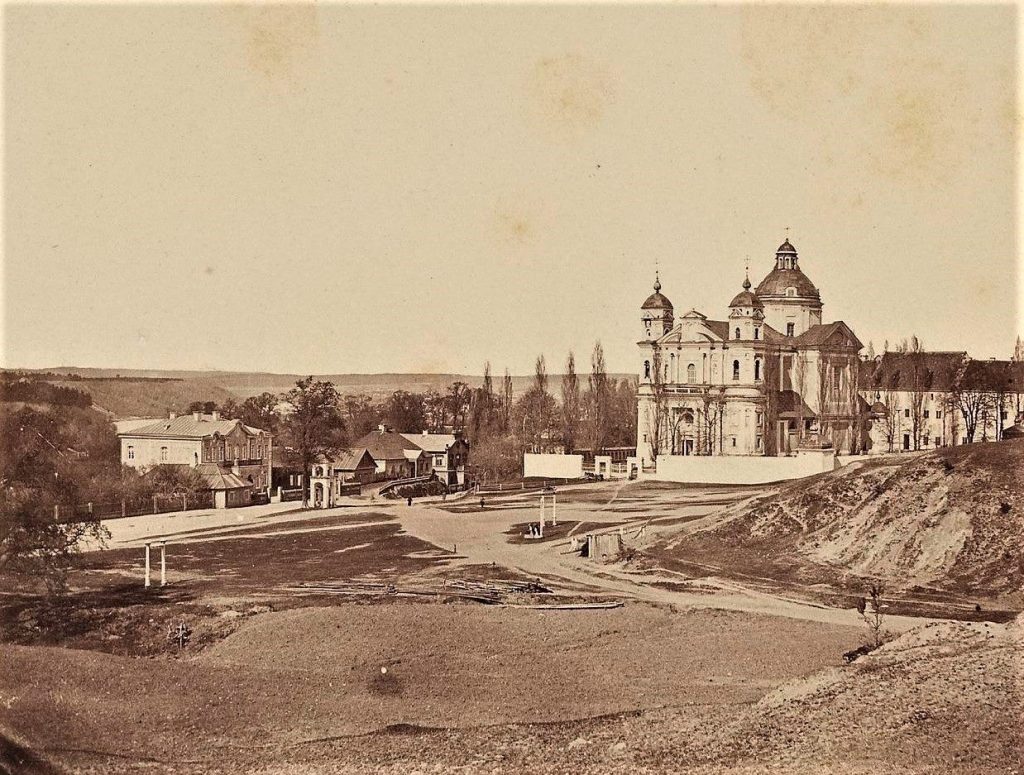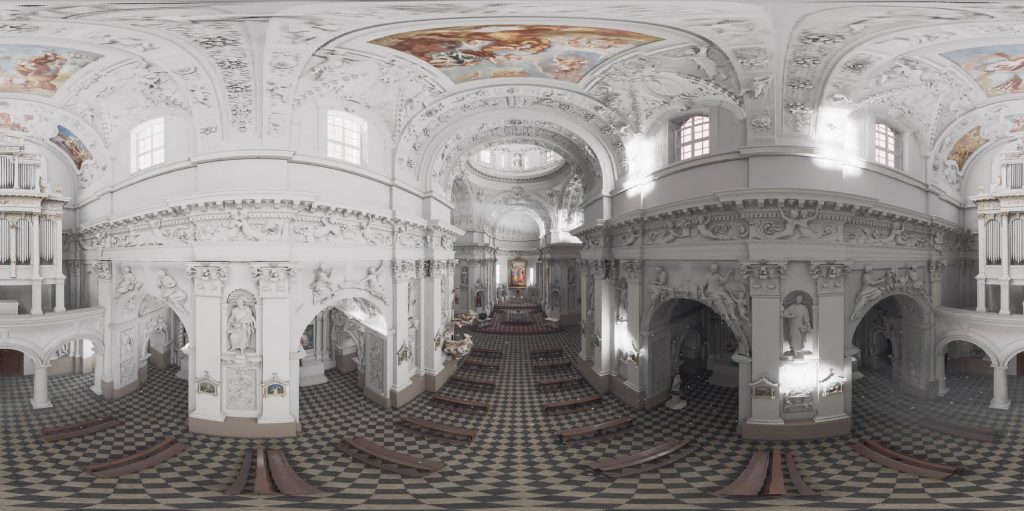Michał Kazimierz Pac and his outstanding gift to Vilnius
As a son of a high official, he could have become a politician. Yet he opted for a different path. In his youth he could have studied at a foreign university, like many of his peers from famous families. But he chose otherwise.
Michał Kazimierz Pac (1624–1682), offspring of an influential magnate family, chose a military career and achieved its highest honours – he became the chief commander of the Lithuanian army, the Great Hetman.
But even that is not his most important merit, as Vilnius residents would say. More significantly to them, Pac built probably the most striking church in the capital.
Founder of the first church in Antakalnis
This architectural gem of the city, dedicated to Saints Peter and Paul, surpassed its time by interior decoration, art historians claim. Fortunately for Vilnans and visitors of the city, the church is in an almost impeccable condition today, more than three centuries from the day when its founding stones were laid in 1668.
“
It was a novelty in the context of Vilnius, the first church built of stone outside the city walls. Until then, only wooden churches had been built in the outskirts of the capital.
It was a novelty in the context of Vilnius, the first church built of stone outside the city walls. Until then, only wooden churches had been built in the outskirts of the capital.
In other words, Pac chose a secluded corner of suburbs for a huge investment rather than a prestigious location in the city centre. In those days, such a decision must have seemed strange and completely unprofitable. Nevertheless, there he built one of the largest and undoubtedly the most ornate of all churches in Vilnius. In doing so, he raised the cultural level of the whole country.
Next to the church a spacious monastery for the Canons Regular of the Lateran was erected. Interestingly, at the beginning of its construction, the old wooden monastery housed no more than ten monks who lived there permanently.
Ingenious plaster mouldings
“
But Pac’s most striking idea was the interior decoration of the new shrine. To mould the three thousand white statues and figurines, he spent just as much as it cost to build the church itself.
But Pac’s most striking idea was the interior decoration of the new shrine. To mould the three thousand white statues and figurines, he spent just as much as it cost to build the church itself.
No one has ever counted the number of moulded images adorning the walls, columns, and vaults of the church. Speaking of them, several aspects should be considered. Firstly, stucco decoration was almost unknown in the Grand Duchy of Lithuania until then, so Pac must have surprised his contemporaries considerably. Secondly, there were no stucco masters in Lithuania at the time. Finally, a mixture of gypsum and lime is a rather unstable material requiring careful handling as it hardens very slowly in the cold and humid Lithuanian climate.
All this did not stop the founder of the church.
Do You Know?
Pac invited two outstanding sculptors, Giovanni Pietro Perti and Giovanni Maria Galli, from Italy. They worked inside the new shrine for as many as eight years, from 1676 and through 1684. The Grand Duchy of Lithuania had never seen masters of that level before, and Pac commissioned them the decoration of a suburban church!
Later, after witnessing the beauty not yet seen in Lithuania, other magnates also chose stucco moulding for the decoration of their palaces and other buildings.
A Baroque theatre of sculpture
Researchers unanimously acknowledge that no other shrine in the former territory of the Grand Duchy of Lithuania equals the church of Saints Peter and Paul in terms of the number of themes and scenes depicted inside it. There is God the Father, who points his finger menacingly; and there are sculptures of saints and of soldiers fighting for faith; and there are devils, birds and snakes, and flocks of angels.
“
Researchers unanimously acknowledge that no other shrine in the former territory of the Grand Duchy of Lithuania equals the church of Saints Peter and Paul in terms of the number of themes and scenes depicted inside it. There is God the Father, who points his finger menacingly; and there are sculptures of saints and of soldiers fighting for faith; and there are devils, birds and snakes, and flocks of angels.
In addition to that, dozens of residents of Vilnius and the suburbs are depicted in the church, according to some researchers. Their images are very realistic, each different, with distinct faces, hairstyles, and headgear. The figure of a beggar in the chapel is particularly dramatic. Quite possibly, the Italian sculptors took it from real life, because the shelter for the poor and the sick had been in operation beside the church well before it was built.
A closer look at the still baroque theatre reveals the elements related directly to the founder, such as the double lily, the main symbol of the Pac family. And the angels in the vault of the transept hold musical instruments exactly as those used in the 17th century. Lovers of enigmatic tales say that standing in the church in complete silence one may hear a barely audible melody played by the petrified musicians.
According to another legend, while creating the figure of St. Mary Magdalene sculptor Giovanni Pietro Perti actually had in mind his wife, also named Magdalene. Even if the story is completely fictitious, the most famous sinner-saint of the Christendom is depicted here as a 17th-century lady: wearing luxurious clothes, necklaces and earrings, in dignified posture, her hair styled to the smallest detail.
A military man and an admirer of Baroque aesthetics
It is surprising that this magnificent Baroque theatre was instigated and financed by a military man whose direct activity was far from artistic.
“
According to contemporaries, Pac was a person of straightforward character and clear-cut opinion. He rarely changed personal attitudes and was not inclined to diplomacy or the search for compromises. He became famous throughout the entire Polish and Lithuanian Commonwealth primarily as a devoted, just, and effective commander of the army.
According to contemporaries, Pac was a person of straightforward character and clear-cut opinion. He rarely changed personal attitudes and was not inclined to diplomacy or the search for compromises. He became famous throughout the entire Polish and Lithuanian Commonwealth primarily as a devoted, just, and effective commander of the army.
In terms of the rank, only the King stood above the Grand Hetman of Lithuania. Jan Sobieski, the King of Poland and the Grand Duke of Lithuania, also started his career in the military and eventually came to rule the country. Interestingly, Pac and Sobieski fought in a duel in their youth. Pac is said to have wounded the future King.
Later, Pac took part in a number of military campaigns and experienced the problems of the army first hand, which helped him to launch a military reform that included the introduction of internal rules and military courts. One of his unfulfilled ideas was the establishment of a military school in Vilnius. This would have been the first institution of its kind in Lithuania.
Appreciating his loyalty, courage, and ingenuity, the writers of the time called Pac the “Sarmatian Hercules”. He remained unmarried until the end of his life, although for political reasons his relatives and even the King himself repeatedly introduced him to noble ladies. Despite that, Pac spent most of his time in military camps.
A religious patron of the arts
As befits a wealthy magnate, Pac led a luxurious life. He had a palace in the centre of Vilnius, next to the Town Hall Square. His home was decorated by esteemed artists, therefore the palace fascinated contemporaries with exceptional opulence. Not surprisingly, even the King Jan Sobieski stayed there during his visit in Vilnius in 1686.
Pac’s life had another side as well as the Great Hetman was a devout Christian and a generous patronof the Church. Thus, on the one hand, a wrathful and strict warlord, on the other, a humble sheep of God. This is a sign of the Baroque, an era of great contrasts.
“
The commander of the army belonged to several religious fraternities in Vilnius and carried a large painting of the Redeemer with him during military campaigns. Enemy bullets left more than one hole in the picture which may be found today inside the Church of St Peter and Paul.
The commander of the army belonged to several religious fraternities in Vilnius and carried a large painting of the Redeemer with him during military campaigns. Enemy bullets left more than one hole in the picture which may be found today inside the Church of St Peter and Paul.
Pac funded the printing of religious publications, the reconstruction of provincial churches, he supported Jesuit and Bernardine monks in Vilnius as well as other monasteries and churches across Lithuania.
His grave under the doorway of the Church of Saints Peter and Paul, is extremely modest. It is marked with a simple slab of stone that reads: Hic jacet peccator (Here lies the sinner).
Mindaugas Paknys





